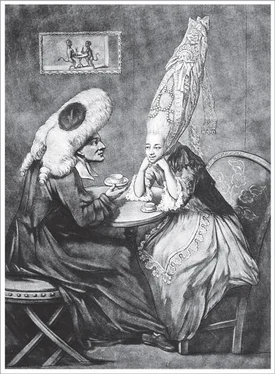Bill Bryson - At Home
Здесь есть возможность читать онлайн «Bill Bryson - At Home» весь текст электронной книги совершенно бесплатно (целиком полную версию без сокращений). В некоторых случаях можно слушать аудио, скачать через торрент в формате fb2 и присутствует краткое содержание. Жанр: Старинная литература, на английском языке. Описание произведения, (предисловие) а так же отзывы посетителей доступны на портале библиотеки ЛибКат.
- Название:At Home
- Автор:
- Жанр:
- Год:неизвестен
- ISBN:нет данных
- Рейтинг книги:4 / 5. Голосов: 1
-
Избранное:Добавить в избранное
- Отзывы:
-
Ваша оценка:
- 80
- 1
- 2
- 3
- 4
- 5
At Home: краткое содержание, описание и аннотация
Предлагаем к чтению аннотацию, описание, краткое содержание или предисловие (зависит от того, что написал сам автор книги «At Home»). Если вы не нашли необходимую информацию о книге — напишите в комментариях, мы постараемся отыскать её.
At Home — читать онлайн бесплатно полную книгу (весь текст) целиком
Ниже представлен текст книги, разбитый по страницам. Система сохранения места последней прочитанной страницы, позволяет с удобством читать онлайн бесплатно книгу «At Home», без необходимости каждый раз заново искать на чём Вы остановились. Поставьте закладку, и сможете в любой момент перейти на страницу, на которой закончили чтение.
Интервал:
Закладка:
Those homely attributes would be the creation of a new type of person who had scarcely existed a generation or so before: the middle class professional. There had always been people of middling rank, of course, but as a distinct entity and force to be reckoned with, the middle class was an eighteenth-century phenomenon. The term middle class wasn’t coined until 1745 (in a book on the Irish wool trade, of all things), but from that point onward the streets and coffeehouses of Britain abounded with confident, voluble, well-to-do people who answered to that description: bankers, lawyers, artists, publishers, designers, merchants, property developers, and others of generally creative spirit and high ambition. This new and swelling middle class served not only the very wealthy but also, even more lucratively, one another. This was the change that made the modern world.
The invention of the middle class injected new levels of demand into society. Suddenly there were swarms of people with splendid town houses that all needed furnishing, and just as suddenly the world was full of desirable objects with which to fill them. Carpets, mirrors, curtains, upholstered and embroidered furniture, and a hundred things more that were rarely found in homes before 1750 now became commonplace.
The growth of empire and of overseas business interests had a dramatic effect, too, often in unexpected ways. Take wood. When Britain was an isolated island nation, it had essentially just one wood for furniture making: oak. Oak is a noble material, solid, long-lasting, literally hard as iron, but it is really only suitable for dense, blocky furniture—trunks, beds, heavy tables, and the like. But the development of the British navy and the spread of Britain’s commercial interests meant that woods of many types—walnut from Virginia, tulipwood from the Carolinas, teak from Asia—became available, and these changed everything within the home, including how people sat and conversed and entertained.
The most prized wood of all was mahogany from the Caribbean. Mahogany was lustrous, warp-resistant, and sublimely accommodating. It could be carved and fretted into the delicate shapes that perfectly suited the exuberance of rococo, yet was strong enough to be a piece of furniture. No wood used in England before had had these characteristics: suddenly furniture had a sculptural quality. The central uprights of the chairs—the splats—could be worked in a way that was wondrous to a people who had never seen anything less clunky than a Windsor chair. The legs had flowing curves and luscious feet; the arms swept along to terminal volutes that were a pleasure to grasp and a delight to behold. Every chair—indeed, every built thing in the house—seemed suddenly to have elegance and style and fluidity.
Mahogany would have been nothing like as esteemed a wood as it was had it not been for one other magical new material, from the other side of the Earth, that gave it the most splendid finish: shellac. Shellac is a hard resinous secretion from the Indian lac beetle. Lac beetles emerge in swarms in parts of India at certain times of the year, and their secretions make varnish that is odorless, nontoxic, brilliantly shiny, and highly resistant to scratches and fading. It doesn’t attract dust while wet, and it dries in minutes. Even now, in an age of chemistry, shellac has scores of applications against which synthetic products cannot compete. When you go bowling, it is shellac that gives the alleys their peerless sheen, for instance.
New woods and varnishes dramatically broadened the forms that furniture could take, but something else was needed—a new system of manufacture—to produce the volumes of quality furniture necessary to satisfy the endless demand. Where traditional designers like Robert Adam made a new design for each commission, furniture makers now realized that it was far more cost-effective to make lots of furniture from a single design. They began to operate a factory system on a large scale, cranking out pieces that were cut from templates, then assembled and finished by teams of specialists. The age of mass manufacture had been born.
There is a certain irony in the thought that the people who did the most to establish mass manufacturing techniques were the ones we now most revere for their craftsmanship, and of no one is that more true than a shadowy furniture maker from the north of England named Thomas Chippendale. His influence was enormous. He was the first commoner for whom a furniture style was named; before him, the names faithfully recalled monarchies: Tudor, Elizabethan, Louis XIV, Queen Anne. Yet we know remarkably little about him. We have no idea, for instance, what he looked like. Except that he was born and grew up in the market town of Otley, on the edge of the Yorkshire dales, nothing at all is known of his early life. His first appearance in the written record is in 1748, when he arrives in London, already aged thirty, and sets up as a new type of maker and purveyor of household furnishings known as an upholder.
That was an ambitious thing to do, for upholders’ businesses tended to be complicated and extensive. One of the most successful, George Seddon, employed four hundred workmen—carvers, gilders, joiners, makers of mirrors and brass, and so on. Chippendale did not operate on quite that scale, but he employed forty or fifty men, and his premises covered two frontages at 60–62 St. Martin’s Lane, just around the corner from the modern Trafalgar Square (though that wouldn’t exist for another eighty years). He also provided an extremely complete service, making and selling chairs, occasional tables, dressing tables, writing tables, card tables, bookcases, bureaus, mirrors, clock cases, candelabra, candle stands, music stands, sconces, commodes, and an exotic new contrivance that he called a “sopha.” Sofas were daring, even titillating, because they resembled beds and so hinted at salacious repose. The firm also stocked wallpaper and carpets, and undertook repairs, furniture removals, and even funerals.
Thomas Chippendale made indisputably fine furniture, but so did lots of others. St. Martin’s Lane alone had thirty furniture makers in the eighteenth century, and hundreds more were scattered across London and throughout the country. The reason we all know Chippendale’s name today is that in 1754 he did something quite audacious. He issued a book of designs called The Gentleman and Cabinet-Maker’s Director , containing 160 plates. Architects had been doing this sort of thing for nearly two hundred years, but nobody had thought to do it for furniture. The drawings were unexpectedly beguiling. Instead of being flat, two-dimensional templates, as was standard, they were perspective drawings, full of shadow and sheen. The prospective purchaser could immediately visualize how these handsome and desirable objects would look in his own home.
It would be misleading to call Chippendale’s book a sensation, because only 308 copies were sold, but the purchasers included forty-nine members of the aristocracy, which made it disproportionately influential. It was also snapped up by other furniture makers and craftsmen, raising another point of oddness—that Chippendale was openly inviting his competitors to make use of his designs for their own commercial purposes. This helped ensure Chippendale’s posterity, but didn’t do much for his immediate fortunes since potential clients could now get Chippendale furniture made more cheaply by any reasonably skilled joiner. It also meant two centuries of difficulty for furniture historians in determining which pieces of furniture are genuine Chippendales and which are copies made using his book. Even if a piece is a “genuine” Chippendale, it doesn’t mean that Thomas Chippendale ever touched it or was even aware of its existence. It doesn’t even necessarily mean that he designed it. No one knows how much talent he brought in, or whether the designs in his books are in fact from his own hand. A genuine Chippendale simply means that it came from his workshop.
Читать дальшеИнтервал:
Закладка:
Похожие книги на «At Home»
Представляем Вашему вниманию похожие книги на «At Home» списком для выбора. Мы отобрали схожую по названию и смыслу литературу в надежде предоставить читателям больше вариантов отыскать новые, интересные, ещё непрочитанные произведения.
Обсуждение, отзывы о книге «At Home» и просто собственные мнения читателей. Оставьте ваши комментарии, напишите, что Вы думаете о произведении, его смысле или главных героях. Укажите что конкретно понравилось, а что нет, и почему Вы так считаете.












